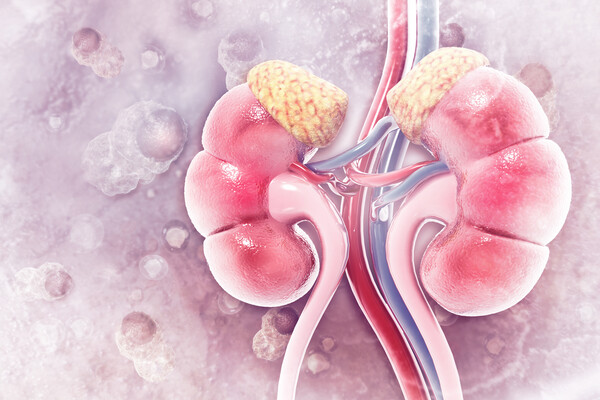It can be alarming to learn that a tumor has been detected in your adrenal glands during a medical examination. However, if you have a tumor in your adrenal gland, a small organ located above your kidneys, and you have no symptoms, and the tumor is small (less than 4 centimeters), you shouldn't worry too much. Why?

It can be alarming to be told that a tumor has been found in your adrenal gland during a medical examination. However, if you have a tumor in your adrenal glands, which are small organs located above your kidneys, and you don't have any symptoms, and the tumor is small (less than four centimeters), there's nothing to worry about. (Credit: Getty Images)
“The role of the adrenal gland, located deepest in the abdomen, is to produce various hormones that are important for maintaining the function of the body,” said Professor Lee Yu-mi of the Department of Endocrine Surgery at Asan Medical Center on the YouTube channel with the same name as the hospital.
Professor Lee explained that “nonfunctional” benign tumors that are not related to adrenal hormones account for 85 to 90 percent of all adrenal tumors.
Nonfunctional benign adrenal tumors do not require surgical removal.
“Most of the tumors found by chance in the adrenal glands, called adrenal incidentalomas, do not have any ‘specific symptoms,’” Professor Lee said. “Having an adrenal tumor does not necessarily mean that you need surgery. Adrenal tumors found by chance are more likely to require surgery.”
Functional benign tumors, which affect adrenal hormone production and cause symptoms, account for about 10 to 15 percent of all adrenal tumors and require surgical treatment.
“Functional tumors are those that produce more of the various hormones produced by the adrenal glands than necessary,” Lee explained why surgical treatment is necessary.
Adrenal hormones include glucocorticoids (cortisol), salt corticoids (aldosterone), androgens, and catecholamines, including epinephrine and norepinephrine, which are produced in the adrenal cortex. These hormones affect the body's essential functions of regulating energy, stress response, blood pressure, and electrolytes and require aggressive treatment.
Functional benign tumors of the adrenal glands can be divided into three categories: Cushing's syndrome accounts for 5-12 percent, pheochromocytoma for 3 percent, and aldosteronism for 1-4 percent.
“Adrenal hormone tests are blood tests and urine tests, and depending on the hormone secreted, Cushing's syndrome (cortisol), primary hyperaldosteronism (aldosterone), and pheochromocytoma (catecholamines) are diagnosed according to the hormone secreted,” Professor Lee said. “If the test shows that the tumor is causing excessive secretion of adrenal hormones, surgical treatment is essential.”
Besides, adrenal cancer, a malignant tumor of the adrenal glands, accounts for 1.9 percent of all adrenal tumors, and metastatic cancer accounts for 0.7 percent of all adrenal tumors. Because the adrenal glands are deep in the body, it is difficult to biopsy them, so it is not easy to determine whether they are malignant or benign. Still, no criteria exist to determine whether they are malignant and require surgery.
Studies have reported that if the size of the tumor exceeds four centimeters in the adrenal gland, which is usually three to six centimeters, it is likely to be malignant. For adrenal tumors larger than 4 centimeters, the probability of adrenal cancer is 0.5 to 2.0 percent; for adrenal tumors between four and six centimeters, the probability increases to 5 to 8 percent; and for adrenal tumors larger than six centimeters, the probability soars to 25 to 35 percent.
“Adrenal cancer is sporadic, but larger adrenal tumors should raise the possibility of adrenal cancer,” Lee said. “The likelihood of adrenal cancer starts to increase when the adrenal tumor is larger than four centimeters, especially when it is larger than six centimeters, where 25 to 35 percent of adrenal tumors are diagnosed. If the tumor is larger than four centimeters, we recommend adrenal surgery to remove it.”
Aside from the size of the tumor, the appearance of the adrenal tumor and its surroundings can also be a good indicator of malignancy.
“Adrenal tumors cannot be easily biopsied like other organs, so we use imaging tests such as CT to determine whether they are malignant or benign by looking at the appearance of the mass,” Lee explained.
“Of course, imaging alone cannot diagnose with 100 percent certainty. However, when a tumor of similar size has an irregular perimeter and invades surrounding tissues, or when the inside of the tumor is not uniform and has a mottled appearance, we suspect it is malignant. In such cases, we recommend surgery,” Professor Lee advised.